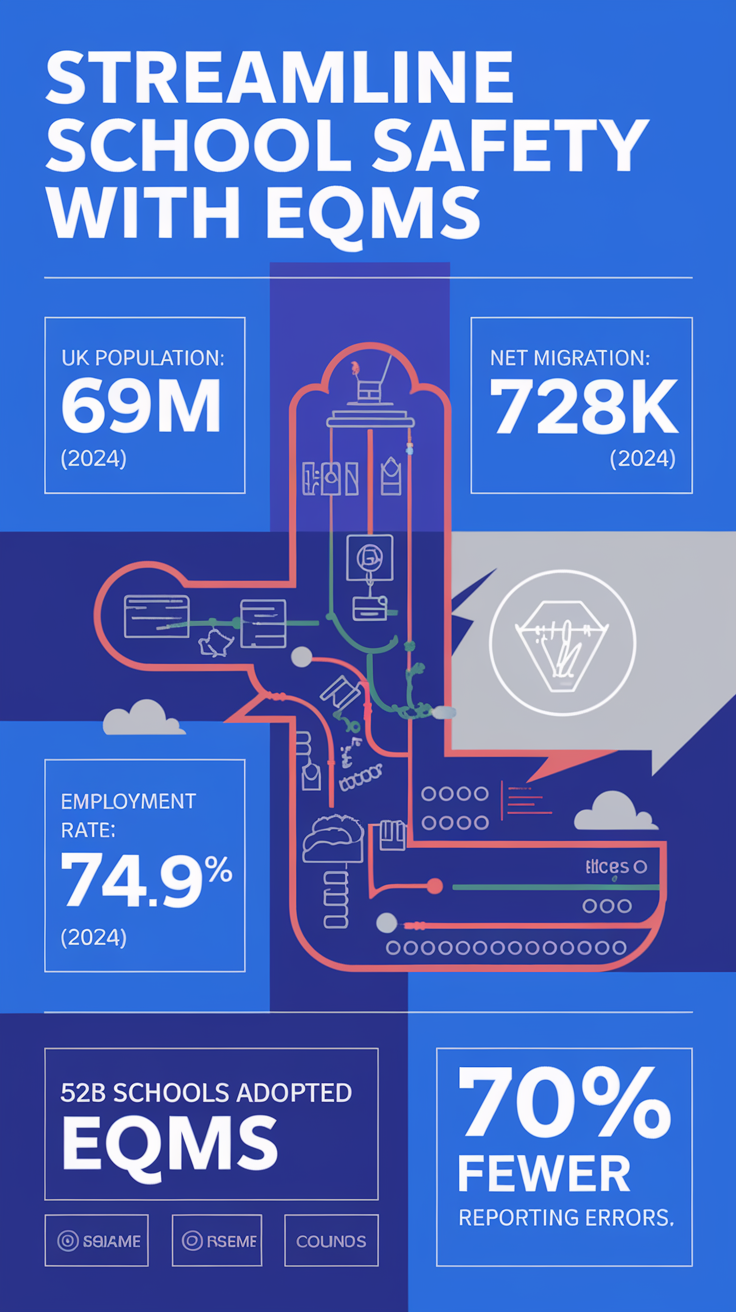
User Training and Onboarding Boosts Reporting Skills

Isn't it time we ask if our approach to staff training in schools truly reconciles with the need for effective incident reporting? Investing in user training and onboarding isn't just about familiarising educational staff with protocols and systems; it's about enhancing their reporting skills to ensure accuracy and timeliness. We often overlook the simplicity of a well-executed training programme that transforms an administrative task into a pillar of school safety and compliance. Let's delve into how thoughtful onboarding processes can make a significant difference in improving reporting competency among educational staff.
The Role of User Training and Onboarding in Enhancing Incident Reporting Competency
User training and onboarding are more than just initial steps—they’re the foundation for fostering better incident reporting competency among educational staff. Whether we call it staff orientation or professional development, the aim remains the same: equipping educators with the skills, clarity, and confidence to handle incident reporting effectively. Without structured onboarding processes or ongoing training programmes, staff may struggle with inconsistent reporting, errors in documentation, or even a lack of understanding about what constitutes an incident. These gaps not only affect overall compliance but can hinder the safety and well-being of students and colleagues alike.
In educational settings, the onboarding process often includes an introduction to reporting protocols and tools, yet real challenges arise when these systems are not reinforced through continuous learning. Take, for instance, a scenario where a staff member is unclear on distinguishing between minor accidents and reportable incidents. This uncertainty can lead to delayed reporting or, worse, critical oversights. By integrating user training into routine professional development, schools can simulate real-life scenarios—like handling bullying reports or managing safety hazards—to ensure staff become confident and competent in recognising and documenting incidents accurately. Such initiatives help eliminate the "trial-and-error" approach that often undermines reporting systems in schools.
The long-term benefits of prioritising onboarding and training for educational staff are hard to ignore. Schools that invest in these processes see improved compliance with regulatory standards, such as those set by the Health and Safety Executive (HSE), which in turn fosters a safer environment for everyone. Moreover, teaching staff who feel supported through comprehensive onboarding are more likely to engage with digital reporting tools or new policies, ensuring adaptability as systems evolve. Ultimately, this commitment to training doesn’t just reduce errors—it builds a culture of accountability and safety that supports the school’s wider goals.
Key Onboarding Strategies for New Educational Staff
Effective onboarding—also referred to as induction or orientation—is the linchpin for integrating new educational staff and equipping them with the skills necessary for accurate incident reporting. When we talk about enhancing reporting proficiency, it’s not just about introducing policies; it’s about fostering a culture of consistency, clarity, and confidence from day one. Without structured onboarding or proper training, incoming staff risk misunderstanding protocols, misclassifying incidents, or delaying reports altogether. Tailored approaches to onboarding, particularly those that cater to the unique needs of schools, can bridge these gaps and set the foundation for long-term success.
One of the most impactful onboarding techniques is mentorship. Pairing new hires with experienced staff not only accelerates their understanding of reporting systems but also provides a direct line to practical insights they might not get from a manual. Another proven method is digital role-playing scenarios. These virtual simulations allow educators to practise reporting in a controlled environment, helping them gain confidence before encountering real-world situations. Additionally, hands-on workshops for digital reporting tools can demystify complex systems, making them more approachable. Schools that incorporate these methods often see smoother transitions and quicker adaptability from their staff.
These onboarding strategies do more than just familiarise staff with reporting processes—they actively improve reporting accuracy and integration speed. By investing in structured, interactive, and school-specific approaches, educational institutions reduce errors, ensure compliance, and foster a proactive mindset among their team members. It’s not just about learning the "what" but truly understanding the "why" behind the protocols, creating a more engaged and competent workforce.
- Orientation sessions focused on reporting protocols
- Mentorship programmes with experienced educators
- Hands-on workshops for digital reporting systems
- Role-playing exercises for incident scenarios
- Early introduction to school-specific incident policies
Best Practices for Training Educational Staff in Incident Reporting

Training programmes designed to improve incident reporting skills must align closely with an institution’s overarching goals. Why? Because if training isn’t tied to the specific needs and priorities of a school or educational organisation, it risks becoming an exercise in futility. For example, when a school prioritises safety and compliance with local regulatory standards, training sessions should focus on these areas to ensure relevance. Misalignment can lead to wasted time, resources, and—most critically—gaps in staff competency. By tailoring the approach, educational leaders can ensure that staff not only gain theoretical knowledge but also understand how their reporting responsibilities contribute to broader institutional goals like student well-being, legal compliance, and operational efficiency.
Interactive and customised methods are the cornerstone of effective training for incident reporting. Imagine the difference between reading a static manual versus participating in a hands-on digital simulation or analysing a real-life case study. One engages, the other bores. Activities like role-playing scenarios allow staff to practise responses to incidents such as accidents or bullying in a realistic but controlled setting. This kind of interactivity boosts engagement and retention, while customising sessions—based on staff feedback or school-specific needs—ensures relevance. For example, educators in a primary school might need training tailored to playground safety, while secondary school staff could focus more on managing behavioural incidents. This flexibility ensures that training feels practical and directly applicable to day-to-day responsibilities.
Measuring outcomes is the final, yet often overlooked, piece of the puzzle. How do we know if training is effective? By setting clear metrics such as reporting accuracy, timeliness, and compliance rates. Pre- and post-training assessments, incident data analytics, and staff feedback can all provide valuable insights into the programme’s success. These metrics not only highlight areas of improvement but also support a cycle of continuous learning. For instance, if data reveals delays in reporting incidents among new hires, this could signal a need for enhanced onboarding processes. In this way, outcome-based evaluation doesn’t just measure success—it drives it.
| Training Type | Description | Benefits |
|---|---|---|
| Workshops | Interactive group sessions | Builds engagement and team cohesion |
| Digital Simulations | Software-based role-playing | Enhances practical skills and confidence |
| Case Studies | Analysing real incidents | Promotes critical thinking |
| Refresher Courses | Periodic updates | Ensures ongoing compliance |
| Feedback Integration | Customised sessions | Addresses specific skill gaps |
Addressing Challenges in Staff Incident Reporting Competency
When it comes to improving the competency of educational staff in incident reporting, several barriers often stand in the way. These obstacles—often tied to resistance to change, unfamiliarity with digital reporting tools, and inconsistent protocols—can undermine even the most well-intentioned training and onboarding programmes. Whether we call it staff development, professional orientation, or skills enhancement, the ultimate aim is to ensure educators are equipped to handle incidents effectively and consistently. Without addressing these challenges head-on, gaps in reporting can persist, jeopardising both compliance and the safety of the school community.
So, how do we overcome these hurdles? The first step is fostering a strong reporting culture. This means creating an environment where staff feel empowered and supported to report incidents without fear of missteps or repercussions. Regular training sessions that incorporate real-world scenarios can help alleviate confusion around reporting protocols, while continuous support—such as mentorship programmes or help desks—ensures that staff have guidance when they need it. Additionally, providing easy access to user-friendly digital tools can make the entire process less intimidating, allowing educators to focus on accurate documentation rather than wrestling with complicated systems.
Addressing these challenges has a ripple effect on the broader safety and compliance goals of an institution. Schools that proactively tackle these barriers often experience fewer reporting delays, improved accuracy, and higher engagement from staff. More importantly, they contribute to a safer environment for both students and educators. By removing these bottlenecks, institutions not only meet regulatory standards but also demonstrate a commitment to accountability and continuous improvement.
- Resistance to adopting new protocols
- Limited access to digital tools or training resources
- Lack of clarity in incident classifications
- Varying levels of staff engagement
The Role of Digital Tools in Improving Incident Reporting
Digital reporting tools are transforming how educational staff approach incident reporting, making the process more efficient, accurate, and reliable. These tools, often integrated as part of incident management systems, eliminate the inconsistencies and delays that can plague manual methods. By standardising processes and offering structured workflows, they ensure that every incident—whether it’s a minor playground accident or a serious bullying case—follows a consistent reporting protocol. Real-time data sharing further optimises reporting workflows, allowing administrators to act swiftly while maintaining compliance with educational policies. The result? A smoother, more streamlined system that empowers educators to focus on what matters most: student safety and well-being.
One standout example of a digital tool enhancing incident reporting is a platform that combines customised forms, automated alerts, and analytics dashboards. Imagine a school using a system where staff can log incidents via mobile devices, triggering immediate notifications to relevant personnel. The platform’s analytics feature then tracks trends, such as recurring safety hazards, enabling proactive measures to prevent future incidents. Such tools not only save time but also foster accountability by creating a transparent, centralised repository of incident data. This kind of innovation showcases how digital solutions are revolutionising the way schools approach safety and compliance.
Measuring the Effectiveness of Training and Onboarding Programmes

Understanding the impact of training and onboarding initiatives is essential for fostering better incident reporting competency among educational staff. Whether we call it staff development, professional induction, or skills enhancement, the objective remains the same: improving performance through structured learning. But how do we know if these programmes are working? Measuring the outcomes of user training and onboarding (or acclimatisation and orientation) is the only way to ensure they are achieving their intended goals. Without clear metrics, the effectiveness of these programmes remains uncertain and risks becoming a "tick-box" exercise rather than a transformative approach to building reporting skills.
The tools for evaluating success are as varied as the training methods themselves. Pre- and post-training assessments are among the most practical methods to gauge progress, offering a direct comparison of knowledge and skills before and after the programme. Feedback surveys provide invaluable insights into staff perceptions and highlight areas for improvement, ensuring the training is not only comprehensive but also relevant. Analytics platforms, especially those integrated into digital reporting systems, can track tangible metrics like reporting accuracy and timeliness. Together, these tools create a robust framework for assessing the effectiveness of onboarding and training, leaving no room for guesswork.
Metrics don’t just measure success—they drive it. By analysing data, schools can identify gaps, refine training content, and adapt strategies to meet evolving needs. For instance, if reporting accuracy rates improve but timeliness lags, this signals a need for targeted interventions. This continuous improvement cycle ensures that training programmes remain impactful and aligned with institutional goals like compliance, safety, and operational efficiency. Ultimately, it’s about creating a feedback loop that transforms training into a dynamic, ever-evolving process.
- Reporting accuracy rates
- Time taken to report incidents
- Staff confidence in using tools and protocols
- Feedback on training relevance and engagement
Real-World Case Studies: Success in Incident Reporting Training
Case studies are a powerful way to illustrate how training and onboarding can elevate incident reporting competency among educational staff. Whether it's through structured workshops, hands-on mentoring, or role-playing exercises, these strategies transform the abstract concepts of user training into tangible results. In other words, when institutions invest in equipping their educators with the right skills—be it through induction, professional development, or practical simulations—they create a foundation for consistent, accurate, and timely reporting. The impact of these programmes is not just theoretical; real-world examples show how schools have significantly improved both compliance and safety through strategic initiatives.
Consider Secondary School A, which faced challenges with inconsistent reporting and frequent errors in documentation. After recognising the need for a structured approach, the school introduced tailored workshops and digital tools designed to familiarise staff with reporting protocols and streamline their workflows. The result was striking—a 40% reduction in reporting errors within a year. This wasn’t just a by-product of better technology; it was the outcome of aligning tools with a well-thought-out training programme that bridged gaps in understanding and application.
Another example comes from Primary School B, which prioritised peer mentoring to address low staff engagement in incident reporting. By pairing new hires with experienced educators, the school created an environment of shared learning and support. Combined with interactive modules that simulated real-life scenarios, this strategy significantly boosted staff confidence. The outcome? A noticeable increase in reporting activity and improved accuracy across the board. Similarly, Academy C introduced role-playing scenarios to refine staff response times during incidents. This approach not only made the training sessions engaging but also cultivated a proactive mindset among staff, leading to faster reporting times and enhanced incident management.
| Case Study | Strategy | Result |
|---|---|---|
| Secondary School A | Digital tools and workshops | 40% reduction in errors |
| Primary School B | Peer mentoring | Increased staff engagement |
| Academy C | Role-playing scenarios | Faster reporting times |

The infographic highlights the adoption of EQMS in 52 billion schools, connecting safety and operational efficiency. Schools experienced a 70% reduction in reporting errors after using EQMS.
Visual components include pathways representing interconnected systems, showcasing the integration and streamlining of workflows. Icons and visuals represent technology, communication, and reporting processes.
The bold, bright design with blue, white, and orange contrasts conveys professionalism, safety, and innovation while linking EQMS solutions to operational efficiency and transparency.
Final Words
Understanding the pivotal role of user training and onboarding in enhancing incident reporting competency is crucial for educational institutions.
We've explored how these processes contribute to improved accuracy, confidence, and safety amongst staff. Tailored onboarding strategies, coupled with interactive training, address significant challenges and bolster the adaptability of new and existing digital tools.
As we implement these practices, let's focus on continuous improvement and responsiveness to feedback. By fostering a culture of effective training and support, educational staff can handle incident reporting with greater assurance and precision, ultimately ensuring a safer learning environment.









